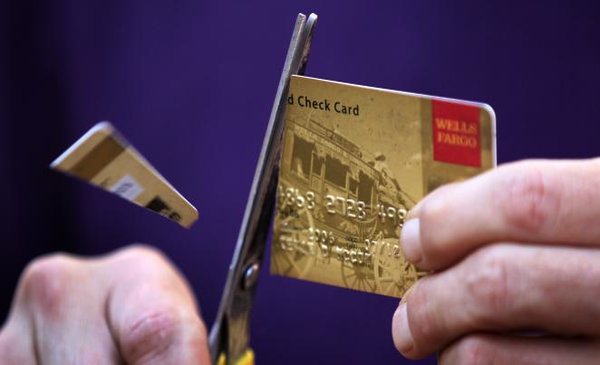
In his article “Will Customers Forgive Your Brand?” Mark Di Somma outlined ten situations where brands may need to ask forgiveness, from scandal to arrogance to corruption.
Sadly, these instances seem to happen with increasing frequency. Or is it that, thanks to social media and 24-hour news coverage, we’re simply more aware? Regardless, brands like people can be flawed in some way. Those flaws may be insufficient marketing, gross misjudgment of the marketplace, sloppy quality controls, or downright cheating.
How the brand-in-crisis handles itself will certainly have a bearing on the outcome. But don’t miss the greater benefit of an otherwise strong, well-regarded or well-known brand: brand resiliency – the ability to bounce back.
Wells Fargo is undergoing a scandal that’s unprecedented in U.S. banking history. Its corporate culture insisted that its branches be referred to as “stores” and that its employees must find “solutions” for their customers (regardless of their need) or risk termination. This bare-knuckles, hard sell atmosphere fostered the creation of bogus accounts to boost sales numbers for tellers and managers. According to Kevin Pham a former employee, they targeted the vulnerable; Mexican immigrants who speak little English. Older adults with memory problems. College students opening their first bank accounts. Small-business owners with several lines of credit.
As a result, over 5,000 of them were fired for it, not to mention the resignation of the CEO after a thrashing in front of a congressional committee. Humiliating? Disgusting? Embarrassing? Yes, but not terminal (as of today, anyway). The Wells Fargo brand has shown a surprising resiliency, even in an industry that asks us to trust them with our money. How can that be? I would argue that Wells Fargo has invested heavily in positive brand equity—even considered a “Great” company by Jim Collins in his book “Good to Great.” That investment has put resiliency in the bank.
The Trump brand could be compared to the classic Timex watch campaign pitched by the late, great John Cameron Swayze: “It takes a licking and keeps on ticking.” Indeed, during his run for the White House, even his most ardent supporters would concede his “lickings” have been largely self-inflicted — the latest disaster being the release of a “hot mic” recording of his comments about women. And at this writing, the outcome is as yet undecided; but the “let Trump be Trump” strategy has kept the Trump brand true to itself, if nothing else. Resilient? Undoubtedly. Why? Trump is a well-known brand with fame and star-quality created by TV. In today’s culture, that’s about all it takes.
If we thought the Exxon Valdez disaster in 1989 wasn’t bad enough, BP suffered the Deep Water Horizon spill in 2010 that killed 11 and fouled the Gulf of Mexico with the unrelenting discharge of an estimated 4.9 million barrels of crude. During the crisis, the British BP CEO attempted to downplay the situation and infamously lamented that he “wanted his life back” to the outrage of American consumers. Eventually, the spill was plugged, the clean up began, and the CEO was gone. And is BP still around? Yes. Even as a blockbuster feature film about the incident is in release – just in case anyone may have forgotten what a horrendous disaster it was.
Each of these examples (and there are many, many others) illustrates the resiliency of brands. Even “personal brands” such as Trump, Michael Phelps, or Tiger Woods are actually larger than the persons who bear the name. How is that possible? Because brands are formed in the minds of the consumer and become “owned” by them. And as long as the brand crisis is not too egregious, (ValuJet, Enron, Arthur Andersen) the brand can be resilient and survive. In most cases, the brand may never return to its former luster, but it will live to go to market another day, as in the case of Martha Stewart.
In the case of corporate brands, Wells Fargo would do well to learn from BP. While both brands have demonstrated resilience, only BP (at this point) has demonstrated an amount of corporate redemption by actively taking responsibility for the culture that nearly destroyed it, working to clean up the environment and changing its policies. And BP has wielded public relations and advertising with great effect to communicate its redemptive behavior and rehabilitate the brand. Wells Fargo must do the same if it is to be more than just a brand survivor.
In the early hours of the Volkswagen scandal Dorie Clark recommended three actions the brand needed to take to address its crisis:
1. Admit the severity of the problem
2. Show that it will never happen again
3. Move quickly and transparently
Her advice is timeless and will help the next brand in trouble.
As we observed earlier, the crisis situations for brands are happening with seemingly greater frequency. Brands that face the need to “ask forgiveness” are more resilient than brands or non-brands that are poorly marketed to start with. Resilience gives strong brands the opportunity to regroup and repair to survive another day.
The Blake Project Can Help: The Brand Positioning Workshop
Join us in Hollywood, California for Brand Leadership in the Age of Disruption, our 5th annual competitive-learning event designed around brand strategy.
Branding Strategy Insider is a service of The Blake Project: A strategic brand consultancy specializing in Brand Research, Brand Strategy, Brand Licensing and Brand Education
FREE Publications And Resources For Marketers











